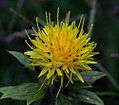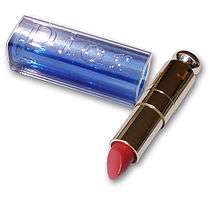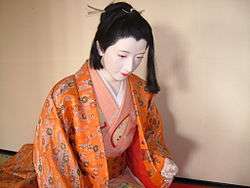Definify.com
Definition 2026
紅
紅
Translingual
Han character
紅 (radical 120 糸+3, 9 strokes, cangjie input 女火一 (VFM), four-corner 21910, composition ⿰糹工)
References
- KangXi: page 916, character 1
- Dai Kanwa Jiten: character 27243
- Dae Jaweon: page 1343, character 8
- Hanyu Da Zidian: volume 5, page 3363, character 5
- Unihan data for U+7D05
Chinese
| trad. | 紅 | |
|---|---|---|
| simp. | 红 | |
Glyph origin
| Characters in the same phonetic series (工) (Zhengzhang, 2003) | |
|---|---|
| Old Chinese | |
| 缸 | *kroːŋ, *ɡroːŋ |
| 篢 | *kluːmʔ, *koːŋ |
| 贑 | *kluːmʔ |
| 涳 | *ŋr'oːŋ, *kʰroːŋ, *kʰoːŋ |
| 江 | *kroːŋ |
| 肛 | *kroːŋ, *qʰroːŋ |
| 扛 | *kroːŋ |
| 杠 | *kroːŋ |
| 豇 | *kroːŋ |
| 茳 | *kroːŋ |
| 釭 | *kroːŋ, *koːŋ, *kuːŋ |
| 矼 | *kroːŋ |
| 玒 | *kroːŋ, *koːŋ |
| 虹 | *kroːŋs, *koːŋs, *ɡoːŋ |
| 腔 | *kʰroːŋ |
| 崆 | *kʰroːŋ, *kʰoːŋ |
| 羫 | *kʰroːŋ |
| 控 | *kʰroːŋ, *kʰoːŋs |
| 椌 | *kʰroːŋ, *kʰoːŋ |
| 悾 | *kʰroːŋ, *kʰoːŋ, *kʰoːŋs |
| 跫 | *kʰroːŋ, *kʰoŋ, *ɡoŋ |
| 啌 | *qʰroːŋ |
| 谾 | *qʰroːŋ, *qʰoːŋ |
| 舡 | *qʰroːŋ |
| 缻 | *ɡroːŋ |
| 項 | *ɡroːŋʔ |
| 屸 | *ɡ·roːŋ |
| 功 | *koːŋ |
| 工 | *koːŋ |
| 疘 | *koːŋ |
| 魟 | *koːŋ, *qʰoːŋ, *ɡoːŋ |
| 攻 | *koːŋ, *kuːŋ |
| 愩 | *koːŋ |
| 碽 | *koːŋ |
| 貢 | *koːŋs |
| 羾 | *koːŋs |
| 空 | *kʰoːŋ, *kʰoːŋs |
| 箜 | *kʰoːŋ |
| 硿 | *kʰoːŋ |
| 埪 | *kʰoːŋ |
| 鵼 | *kʰoːŋ |
| 倥 | *kʰoːŋ, *kʰoːŋʔ, *kʰoːŋs |
| 鞚 | *kʰoːŋs |
| 叿 | *qʰoːŋ |
| 嗊 | *qʰoːŋʔ |
| 訌 | *ɡoːŋ |
| 紅 | *ɡoːŋ |
| 仜 | *ɡoːŋ |
| 葒 | *ɡoːŋ |
| 渱 | *ɡoːŋ |
| 鴻 | *ɡoːŋ, *ɡoːŋʔ |
| 汞 | *ɡoːŋʔ |
| 澒 | *ɡoːŋʔ |
| 鞏 | *koŋʔ |
| 巩 | *koŋʔ |
| 銎 | *kʰoŋ, *qʰoŋ |
| 恐 | *kʰoŋʔ, *kʰoŋs |
| 蛩 | *ɡoŋ |
| 筇 | *ɡoŋ |
| 桏 | *ɡoŋ |
| 邛 | *ɡoŋ |
Pronunciation
- Mandarin
- Cantonese (Jyutping): hung4
- Gan (Wiktionary): fung4
- Hakka (Sixian, PFS): fùng
- Min Dong (BUC): è̤ng / hùng
- Min Nan (POJ): âng / hông
- Wu (Wiktionary): hhon (T3)
- Xiang (Wiktionary): hong2
- Mandarin
- (Standard Chinese, Beijing)+
- Pinyin:
- Zhuyin: ㄏㄨㄥˊ
- Wade-Giles: hung2
- Gwoyeu Romatzyh: hongr
- IPA (key): /xʊŋ³⁵/
-

- (Standard Chinese, Beijing)+
- Cantonese
- (Standard Cantonese, Guangzhou)+
- Jyutping: hung4
- Yale: hùhng
- Cantonese Pinyin: hung4
- IPA (key): /hʊŋ²¹/
- (Standard Cantonese, Guangzhou)+
- Gan
- Hakka
- (Sixian, incl. Miaoli and Meinong)
- Pha̍k-fa-sṳ: fùng
- Hakka Romanization System: fungˇ
- Hagfa Pinyim: fung2
- IPA: /fuŋ¹¹/
- (Sixian, incl. Miaoli and Meinong)
- Min Dong
- (Fuzhou)
- Bàng-uâ-cê: è̤ng / hùng
- IPA (key): /øyŋ⁵³/, /huŋ⁵³/
- Note: è̤ng - colloquial; hùng - literary ("successful; red bunting").
- (Fuzhou)
- Min Nan
- (Hokkien)
- Pe̍h-ōe-jī: âng / hông
- Tâi-lô: âng / hông
- Phofsit Daibuun: aang, hoong
- IPA (Xiamen): /aŋ²⁴/, /hɔŋ²⁴/
- IPA (Quanzhou): /aŋ²⁴/, /hɔŋ²⁴/
- IPA (Zhangzhou): /aŋ¹³/, /hɔŋ¹³/
- IPA (Taipei): /aŋ²⁴/, /hɔŋ²⁴/
- IPA (Kaohsiung): /aŋ²³/, /hɔŋ²³/
- Note: âng - colloquial; hông - literary.
- (Hokkien)
- Wu
- (Shanghainese)
- Wiktionary: hhon (T3)
- IPA (key): /ɦʊŋ²³/
- (Shanghainese)
- Xiang
- Dialectal data▼
| Variety | Location | 紅 |
|---|---|---|
| Mandarin | Beijing | /xuŋ³⁵/ |
| Harbin | /xuŋ²⁴/ | |
| Tianjin | /xuŋ⁴⁵/ | |
| Jinan | /xuŋ⁴²/ | |
| Qingdao | /xəŋ⁴²/ | |
| Zhengzhou | /xuŋ⁴²/ | |
| Xi'an | /xuŋ²⁴/ | |
| Xining | /xuə̃²⁴/ | |
| Yinchuan | /xuŋ⁵³/ | |
| Lanzhou | /xũn⁵³/ | |
| Ürümqi | /xuŋ⁵¹/ | |
| Wuhan | /xoŋ²¹³/ | |
| Chengdu | /xoŋ³¹/ | |
| Guiyang | /xoŋ²¹/ | |
| Kunming | /xoŋ³¹/ | |
| Nanjing | /xoŋ²⁴/ | |
| Hefei | /xəŋ⁵⁵/ | |
| Jin | Taiyuan | /xuəŋ¹¹/ |
| Pingyao | /xuŋ¹³/ | |
| Hohhot | /xũŋ³¹/ | |
| Wu | Shanghai | /ɦoŋ²³/ |
| Suzhou | /ɦoŋ¹³/ | |
| Hangzhou | /ɦoŋ²¹³/ | |
| Wenzhou | /ɦoŋ³¹/ | |
| Hui | Shexian | /xuʌ̃⁴⁴/ |
| Tunxi | /xan⁴⁴/ | |
| Xiang | Changsha | /xoŋ¹³/ |
| Xiangtan | /ɦən¹²/ | |
| Gan | Nanchang | /fuŋ⁴⁵/ |
| Hakka | Meixian | /fuŋ¹¹/ |
| Taoyuan | /fuŋ¹¹/ | |
| Cantonese | Guangzhou | /hoŋ²¹/ |
| Nanning | /huŋ²¹/ | |
| Hong Kong | /huŋ²¹/ | |
| Min | Xiamen (Min Nan) |
/hɔŋ³⁵/ /aŋ³⁵/ |
| Fuzhou (Min Dong) | /øyŋ⁵³/ | |
| Jian'ou (Min Bei) | /ɔŋ²¹/ | |
| Shantou (Min Nan) |
/hoŋ⁵⁵/ /aŋ⁵⁵/ |
|
| Haikou (Min Nan) |
/hɔŋ³¹/ /aŋ³¹/ |
| Rime | |
|---|---|
| Character | 紅 |
| Reading # | 1/1 |
| Initial (聲) | 匣 (33) |
| Final (韻) | 東 (1) |
| Tone (調) | Level (Ø) |
| Openness (開合) | Open |
| Division (等) | I |
| Fanqie | 戸公切 |
| Reconstructions | |
| Zhengzhang Shangfang |
/ɦuŋ/ |
| Pan Wuyun |
/ɦuŋ/ |
| Shao Rongfen |
/ɣuŋ/ |
| Edwin Pulleyblank |
/ɦəwŋ/ |
| Li Rong |
/ɣuŋ/ |
| Wang Li |
/ɣuŋ/ |
| Bernard Karlgren |
/ɣuŋ/ |
| Expected Mandarin Reflex |
hóng |
| Baxter-Sagart system 1.1 (2014) | |
|---|---|
| Character | 紅 |
| Reading # | 1/1 |
| Modern Beijing (Pinyin) |
hóng |
| Middle Chinese |
‹ huwng › |
| Old Chinese |
/*ɡˤoŋ/ |
| English | pink |
Notes for Old Chinese notations in the Baxter-Sagart system: * Parentheses "()" indicate uncertain presence; | |
| Zhengzhang system (2003) | |
|---|---|
| Character | 紅 |
| Reading # | 1/1 |
| No. | 4055 |
| Phonetic component |
工 |
| Rime group |
東 |
| Rime subdivision |
0 |
| Corresponding MC rime |
洪 |
| Old Chinese |
/*ɡoːŋ/ |
Definitions
紅
- red
- (colloquial) popular; in vogue
- The red clothes and bunting used on festive occasions.
- revolutionary; Communist; Red
- worldly
- women's
- bonus; dividend
- (Cantonese) blood tofu
- A surname. Hong
Compounds
|
|
|
Pronunciation
- Mandarin
- (Standard Chinese, Beijing)+
- Pinyin:
- Zhuyin: ㄍㄨㄥ
- Wade-Giles: kung1
- Gwoyeu Romatzyh: gong
- IPA (key): /kʊŋ⁵⁵/
- (Standard Chinese, Beijing)+
- Cantonese
- (Standard Cantonese, Guangzhou)+
- Jyutping: gung1
- Yale: gūng
- Cantonese Pinyin: gung1
- IPA (key): /kʊŋ⁵⁵/
- (Standard Cantonese, Guangzhou)+
- Min Dong
- (Fuzhou)
- Bàng-uâ-cê: gĕ̤ng
- IPA (key): /køyŋ⁵⁵/
- (Fuzhou)
Definitions
紅
- †Substitute character for 功 (gōng).
- †Substitute character for 工 (gōng).
- Placename in the State of Lu during the Spring and Autumn Period in Chinese history, northeast of modern Tai'an, Shandong.
Pronunciation
- Mandarin
- (Standard Chinese, Beijing)+
- Pinyin:
- Zhuyin: ㄐㄧㄤˋ
- Wade-Giles: chiang4
- Gwoyeu Romatzyh: jianq
- IPA (key): /t͡ɕi̯ɑŋ⁵¹/
- (Standard Chinese, Beijing)+
- Cantonese
- (Standard Cantonese, Guangzhou)+
- Jyutping: gong3
- Yale: gong
- Cantonese Pinyin: gong3
- IPA (key): /kɔːŋ³³/
- (Standard Cantonese, Guangzhou)+
Definitions
紅
Japanese
Kanji
Readings
- Goon: ぐ (gu)
- Kan’on: こう (kō)
- Kan’yōon: く (ku)
- Kun: くれない (kurenai), べに (beni), あか (aka), あか.い (aka.i), もみ (momi)
- Nanori: くれ (kure), もみ (momi)


Etymology 1
Originally a compound of 呉 (Kure, “China”) + の (no, “possessive particle”) + 藍 (ai, “indigo”: by extension, “dye”). The 紅花 (benibana) plant (the safflower), from which the kurenai color dye was extracted, was brought to Japan from China.
/kure no ai/ → /kurenai/
Pronunciation
Noun
紅 (hiragana くれない, romaji kurenai, historical hiragana くれなゐ)
- the color crimson, a vivid red edging towards pink
- the benibana or safflower from which this color is extracted, Carthamus tinctorius
Synonyms


Etymology 2
Derivation unclear. Few native Japanese words begin with voiced plosives, suggesting that this term was borrowed. May be from Okinawan bin as in 紅型 (bingata, a type of brightly colored Okinawan dying technique), though that derivation is also unclear.
Pronunciation
Noun
- the color crimson, a vivid red edging towards pink
- the benibana or safflower from which this color is extracted, Carthamus tinctorius
- the crimson pigment extracted from the benibana, used in cosmetics and as a food coloring
- rouge, a red cosmetic traditionally made from the benibana
- lipstick or lip liner, also traditionally made from the benibana
Synonyms
- (color): 紅色 (kurenaiiro), 紅色 (beniiro)
- (plant): 紅花 (benibana)
- (pigment): 臙脂 (enji): often slightly darker than beni
- (rouge): 頬紅 (hōbeni)
- (lipstick): 口紅 (kuchibeni)

Etymology 3
Alternate spelling for 赤 (aka, “red”).
Pronunciation
Alternative forms
Noun

Etymology 4
From 揉み (momi, “kneading”, stem form of verb momu), by extension from the kneading of cloth during the dying process.
Pronunciation
Alternative forms
- 紅絹
Noun
- silk cloth dyed an even shade of one color, often a deep gold dyed again with kurenai, traditionally used as a kimono liner
Synonyms
- 本紅 (honmomi)

Etymology 5
From Middle Chinese.
Pronunciation
Noun
Idioms
- 紅をさす (こうをさす, kō o sasu); 紅を潮す (こうをちょうす, kō o chōsu): to show the crimson ⇒ to blush or flush, to go red in the face, as from shame or anger
- 紅一点 (こういってん, kō itten): a single point of crimson ⇒ the one different thing in a field of sameness; often refers to a lone woman in a crowd of men
Derived terms
Korean
Hanja
紅 • (hong, gong) (hangeul 홍, 공, McCune-Reischauer hong, kong, Yale hong, kong)
- This term needs a translation to English. Please help out and add a translation, then remove the text
{{rfdef}}.